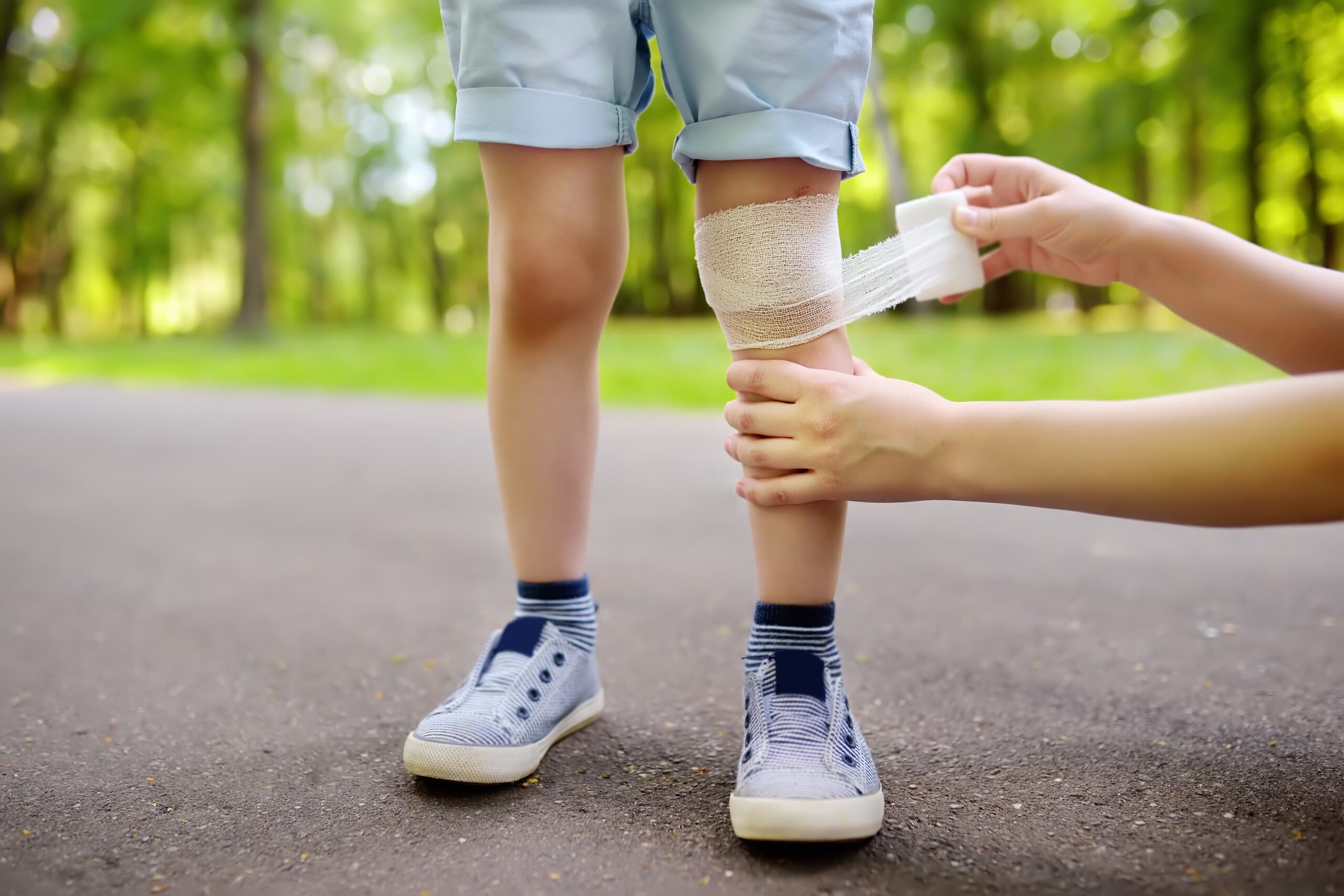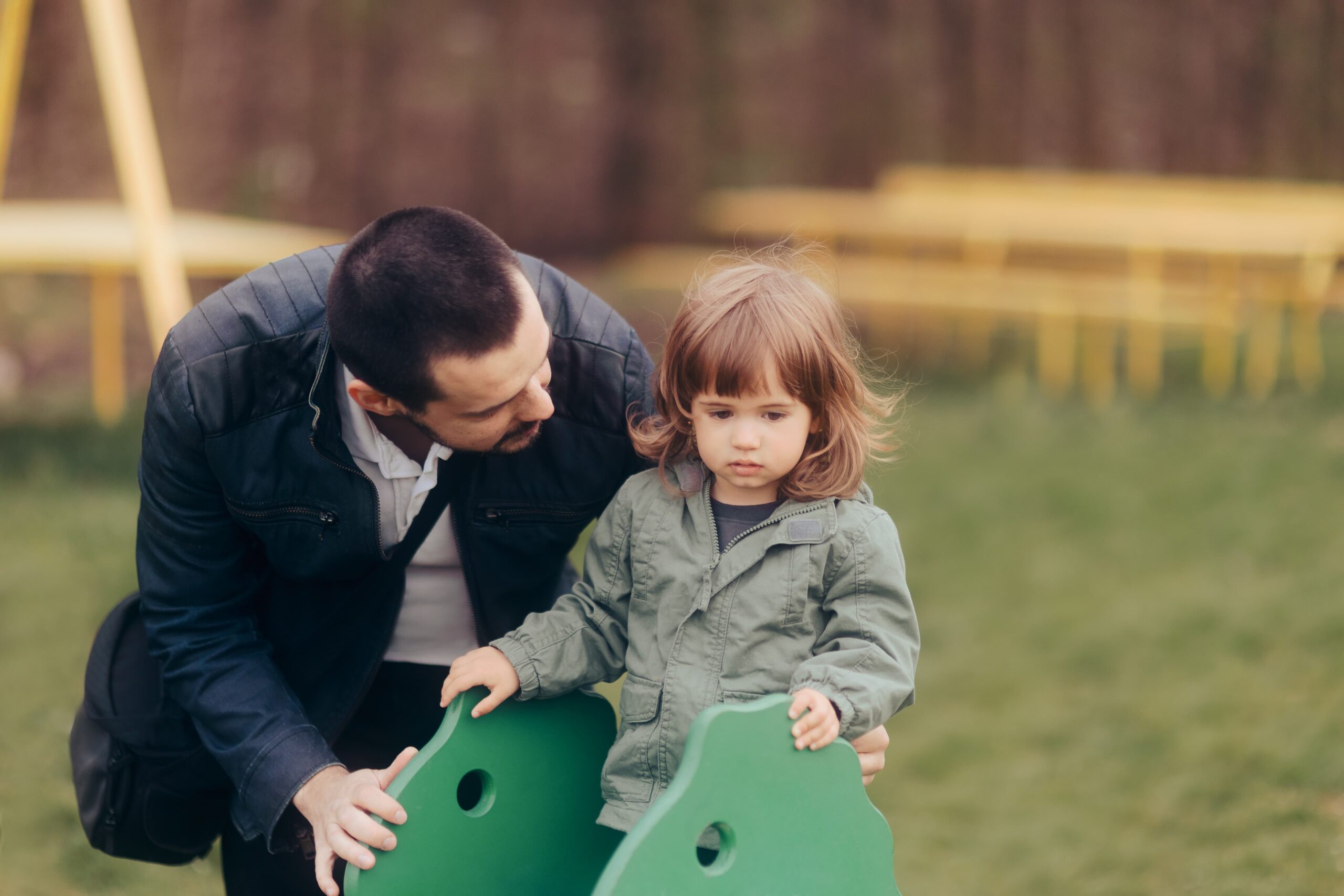- July 15, 2025
You may wonder if the property owner is responsible, especially when you hear them suggest your child was just being a "normal, clumsy kid."
The law, however, recognizes that children are not just small adults. They see the world differently, and property owners have a distinct responsibility to keep them safe.
The answer to the question can a child be a victim in a slip and fall case is an absolute yes. A child can, and often does, have a valid personal injury claim when a property owner’s carelessness leads to their harm.
The Legal Responsibility to Protect Children on Property

Every property owner has a general duty to keep their premises in a reasonably safe condition for lawful visitors. This means fixing broken stairs, cleaning up spills, and warning people about known dangers.
That legal duty becomes even higher when children are likely on the property. The law expects property owners to anticipate that children do not always recognize danger. A child’s natural curiosity, impulsiveness, and lack of experience require property owners to take extra precautions.
A property owner cannot simply rely on the defense that a child should have been more careful or should have known better. They must actively look for and remedy conditions uniquely hazardous to a child.
For example, an open, unsecured swimming pool or a piece of heavy equipment left in a yard poses a much greater risk to a curious five-year-old than to an adult. The law holds the property owner accountable for foreseeing this heightened risk and taking reasonable steps to prevent a tragic accident before it happens.
This heightened duty of care means a property owner must:
- Actively inspect their property for dangers that could attract a child.
- Secure or fence off hazardous areas like pools, construction zones, or abandoned wells.
- Repair known dangers like broken playground equipment or a faulty gate latch.
- Avoid leaving out dangerous items like tools, chemicals, or unsecured heavy objects where a child might find them.
Proving Negligence When a Child Is Injured
To win a slip and fall case, you must prove that the property owner was negligent. This means showing their failure to maintain a safe environment directly caused your child’s injuries.
While the core elements of proving negligence are the same as in an adult’s case, the context is different. The focus shifts to what a reasonable property owner should have done to protect a child, who they should expect to be less cautious.
A key legal idea in many child injury cases is the "attractive nuisance" doctrine. This rule applies to hazards likely to lure a child onto the property. Think of a brightly colored piece of machinery, an old trampoline, or a pond.
A child may not see the danger; they only see a potential place to play. If a property owner has an attractive nuisance and fails to secure it from children, they can be held liable for injuries that result, even if the child was technically trespassing at the time.
This legal principle reinforces that the adult property owner is responsible for protecting children from their own curiosity. To build a strong negligence case, you and your slip and fall lawyer will gather evidence to show the following:
- A Dangerous Condition Existed: You must first prove a hazard was present on the property, such as an unfenced pool, a poorly maintained walkway, or an unstable piece of furniture.
- The Owner Knew or Should Have Known: You need to show the owner was aware of the hazard or that it existed for long enough that they should have discovered it.
- The Owner Failed to Act Reasonably: This involves demonstrating that the owner did not take appropriate steps to fix, fence, or warn about the hazard, especially considering it might attract a child.
- The Hazard Caused the Child's Injury: You must directly link the dangerous condition to the accident and the specific injuries your child suffered.
Common Locations and Hazards in Child Slip and Fall Cases
Accidents involving children can happen almost anywhere, but some locations and hazards appear more frequently in personal injury claims. These are often places where children are expected to be, like schools and playgrounds, or places where dangers are not properly secured from a child’s reach.
A child’s smaller size and developing perception of the world can turn an ordinary object or area into a serious threat. Recognizing these common scenarios can help you identify potential negligence if your child is hurt.
For instance, a fall at a daycare center may point to a lack of proper supervision or poorly maintained play equipment. An injury at a friend’s house could result from an unsecured swimming pool or a dog with a known history of aggression.
In every situation, the key is to look at the environment through the eyes of a child and ask what the property owner should have done to prevent the harm.
Unsecured Areas and Equipment
Many injuries occur because a child gains access to an area or an object that should have been secured. Children are natural explorers, and a simple gate or door is not a deterrent unless it is properly latched and maintained.
Property owners are responsible for ensuring these areas are not an open invitation to danger. This includes unfenced swimming pools, unlocked sheds containing tools or chemicals, and large, unstable equipment like old appliances or trampolines left in a yard.
Poorly Maintained Surfaces
Simple slip or trip hazards are a leading cause of injuries for people of all ages, but they can be especially dangerous for children who may be running, playing, and less attentive to the ground in front of them.
These hazards often result from deferred maintenance or simple carelessness on the property owner's part. Common examples include wet floors in stores without warning signs, cracked or uneven sidewalks, torn carpeting, poorly lit stairwells, and unsafe playground surfaces that have lost their soft, shock-absorbing quality.
Dangerous Objects and Substances
A property owner’s duty includes keeping dangerous items out of a child’s reach. A child may not recognize a bottle of colorful cleaning fluid as poison or a fallen power line as an electrical threat.
Negligence can occur when property owners or their employees leave these items in accessible places. This can include anything from unsecured firearms and sharp tools to toxic chemicals and even small objects that present a choking hazard for a toddler.
The Role of Parental Supervision

When a child is injured, the property owner’s insurance company will almost always try to shift the blame to the parents. They will argue that the accident was not their client’s fault, but rather the result of a lack of proper supervision.
This is a common and often hurtful defense tactic designed to make you feel guilty and pressure you to drop your claim. Knowing that a momentary lapse of attention does not automatically disqualify your child’s case is important.
Michigan law recognizes a concept called "comparative negligence." This means that a court can assign a percentage of fault to each party involved in an accident. While a parent’s actions may be considered, the property owner’s duty to fix a known hazard does not disappear just because a parent was present.
A reasonable person knows that even the most diligent parent cannot watch a child every second, especially in a public place like a park or a store. The primary responsibility for maintaining a safe property remains with the owner.
A property owner's argument about supervision often ignores the core issue:
- The Hazard Should Not Have Existed: If a property owner fixed a broken railing, a parent’s supervision level would not matter because the danger would have been removed.
- Children Are Impulsive: It is foreseeable that a child will be curious or act quickly. A property owner’s duty is to account for this predictable childhood behavior.
- The Owner's Negligence Is Separate: The property owner’s failure to maintain their premises is a separate issue from parental supervision. The law allows for both to be considered, but one does not cancel out the other.
Calculating Damages in a Child's Injury Claim
Determining the value of a child’s personal injury claim is far more complex than for an adult. An adult’s claim often focuses on concrete losses like current medical bills and a specific amount of lost wages from a job.
For a child, the injuries they suffer can have lifelong consequences that are not immediately obvious. A broken bone could damage a growth plate, leading to future medical problems. A facial scar could cause a lifetime of emotional distress.
A serious head injury could affect their ability to learn and eventually earn a living.
Because a child’s life is still ahead of them, a claim must account for both their present and future needs.
This requires a careful and forward-looking approach to ensure the child has the financial resources to cover any future medical care, therapy, or educational support they may need due to the injury.
It also involves placing a value on the pain and the loss of a normal childhood, which are very real, even if they do not come with a price tag.
Current and Future Medical Expenses
This is the most direct category of damages. It includes the costs for all medical care related to the injury, starting with the first emergency room visit. It also projects the costs for any future care the child may need, such as additional surgeries as they grow, ongoing physical or occupational therapy, psychological counseling to deal with trauma, and assistive devices.
Pain and Suffering
This category compensates the child for the physical pain and emotional distress they have endured. This includes the pain of the initial injury, the discomfort of medical treatments, and the emotional harm from scarring, disfigurement, or disability.
It also covers the "loss of enjoyment of a normal life," which for a child means being unable to play, participate in sports, or simply enjoy a carefree childhood.
Future Loss of Earning Capacity
For a child who suffers a permanent or disabling injury, this is a very serious consideration. A brain injury or a severe physical disability can limit the types of work the child can perform as an adult, reducing their ability to earn a living over their entire lifetime. Calculating this loss requires projecting what the child might have earned and comparing it to what they are likely to earn now, a complex process often requiring testimony from financial and vocational specialists.
Resolve Your Legal Issues with Confidence

When your child is hurt because of a property owner’s carelessness, you have the right to seek justice on their behalf. These cases are complex and emotionally difficult, but you should not be intimidated by insurance companies or property owners who try to blame you or your child.
At Goodman Acker PC, we believe in standing up for the vulnerable. We are dedicated to helping families across Michigan hold negligent parties accountable. If your child was injured in a fall, let us help you. Please call (248) 831-1507 for a free, no-obligation consultation.

